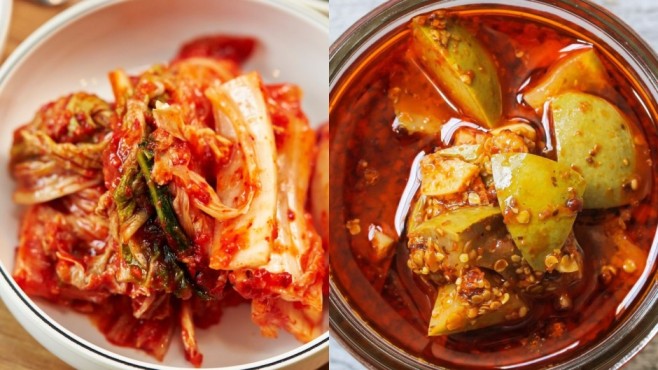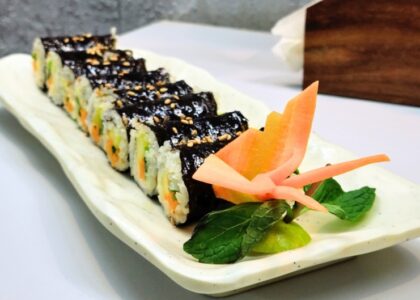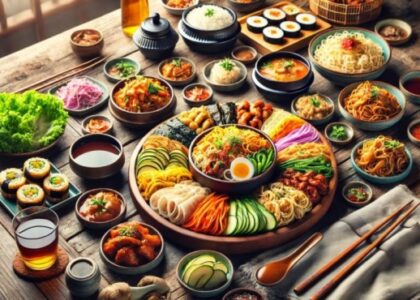The world of condiments and side dishes is a vibrant tapestry, showcasing unique flavors from every corner of the globe. Among these, two culinary treasures stand out: the tangy, spicy allure of Kimchi flavor from South Korea and the bold, aromatic flavors of Indian pickles. Both steep traditions, deeply root themselves in their respective cultures, and are beloved for their ability to elevate any meal.
Kimchi, with its signature fermented tang and spice, reflects the essence of Korean cuisine.
It emphasizes balance and fermentation in every bite. Indian pickles, on the other hand, boast a symphony of bold flavors.
From tangy and spicy to sweet and savory, they capture the diversity of Indian regional cooking.
This blog explores these iconic side dishes, celebrating their distinct characteristics, cultural significance, and the reasons they have won hearts across the globe.
The Origin of Kimchi and Indian Pickles
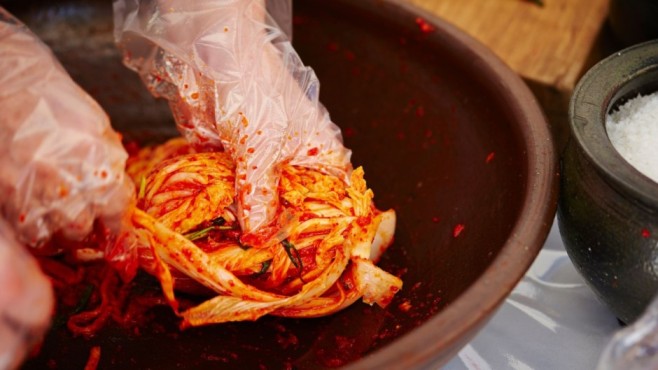
Kimchi Flavor, a beloved staple of South Korean cuisine, is a fermented dish primarily made from napa cabbage and Korean radishes. Seasoned with Gochugaru (Korean red pepper flakes), garlic, ginger, and fish sauce, its origins trace back over 3,000 years. What began as a practical method of preserving vegetables during Korea’s harsh winters has evolved into a culinary icon, embodying the essence of Korean flavor and culture.
Indian pickles, in contrast, showcase the rich diversity of India’s culinary heritage. Each region offers its twist, using ingredients like mangoes, lemons, gooseberries, or vegetables such as carrots and cauliflower. Preserved with oil, salt, and an intricate mix of spices, these pickles vary from tangy and spicy to sweet, reflecting India’s vast regional traditions.
Have You Discovered Kimchi and Kimchi Ramen? Click Here to Know More.
Kimchi Flavor: The Heart of Korean Cuisine
The flavor of kimchi is truly unique, defined by its tangy, spicy, and umami-rich profile. Widely regarded as a cornerstone of Korean cuisine, kimchi has captivated taste buds worldwide, earning its place as a must-try dish for food enthusiasts. Beyond being a culinary delight, kimchi is a cultural icon, featured prominently in Korean dishes such as soups, stews, and pancakes.
What sets kimchi apart is its fermentation process, which not only creates its bold flavor but also boosts its nutritional value. Packed with probiotics, vitamins, and antioxidants, kimchi promotes gut health and strengthens immunity and is a sought-after option for those seeking healthy Korean food. Whether in a traditional Korean kitchen or a global food market, kimchi is a star ingredient that continues to represent Korea’s rich heritage and dynamic flavors.
Indian Pickles: A Symphony of Spices
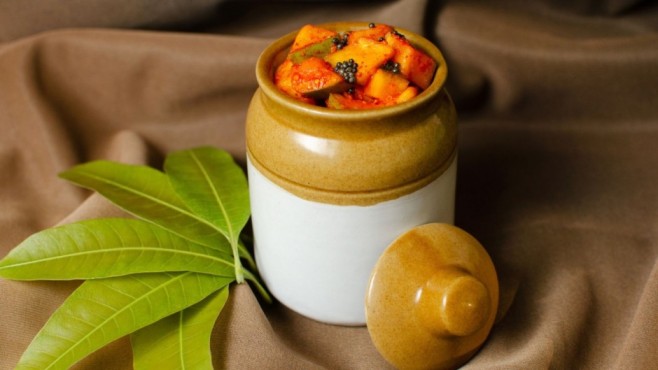
Indian pickles, fondly known as “achaar,” celebrate bold, vibrant flavors. They serve as a staple in Indian households, prized for their ability to elevate even the simplest of meals. From the tangy zest of mango pickles to the aromatic depth of lemon or gooseberry varieties, Indian pickles offer a diverse range of taste profiles that cater to every palate.
Unlike kimchi, which thrives on fermentation, Indian pickles rely on preservation through oil, salt, and an intricate blend of spices such as fenugreek, mustard seeds, turmeric, and chili powder. This process not only enhances their flavor but also ensures they remain shelf-stable for long periods. Often paired with rice, bread, or curries, Indian pickles embody the richness of India’s culinary heritage, making them a beloved accompaniment both locally and internationally.
How Traditional K-food Could Be Healthy? Click Here to Know More.
Cultural Significance and Versatility
Kimchi Flavor: A Global Icon
Kimchi Flavor transcends its role as a mere side dish to embody the spirit and history of South Korea. Its preparation deeply roots in tradition, involving communal gatherings known as “kimjang,” where families and communities come together to prepare and share large batches for the winter months. This cultural practice reflects Korea’s emphasis on family, community, and sustainability.
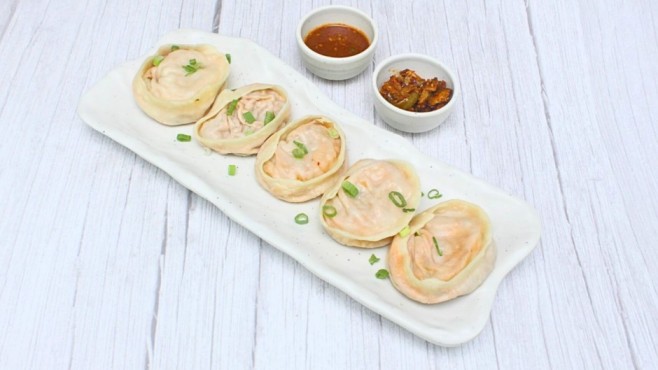
Globally, kimchi flavor has become a symbol of Korean culture. Whether in traditional meals or modern fusion dishes like kimchi Ramen or kimchi Mandu, its popularity knows no bounds. In India, cities like Delhi have embraced Korean cuisine, with restaurants proudly featuring kimchi as a staple. Its versatility shines in soups, stews, fried rice, or as a spicy topping for snacks, making it a favorite for those exploring “Korean food near me.”
Indian Pickles: A Heritage Preserved
Indian pickles are more than condiments; they are a cultural heirloom passed down through generations. The process of making pickles, often a family affair, involves meticulous preparation and a deep understanding of spices. These homemade recipes hold emotional significance, symbolizing love and tradition in every jar.
The versatility of Indian pickles is remarkable, enhancing the simplest meals with bold flavors. They pair effortlessly with dals, parathas, or biryanis, and their appeal stretches from small dhabas to luxury restaurants. Beyond their taste, pickles showcase India’s ingenuity in preserving seasonal produce, allowing their culinary richness to be savored year-round.
How Are Korean Festivals Celebrated in India? Click Here to Know More.
Health Benefits: Kimchi vs. Indian Pickles
Nutritional Value of Kimchi
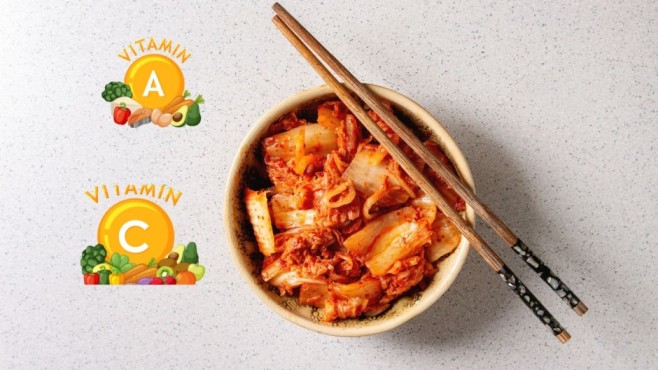
Kimchi stands out as a powerhouse of nutrition and flavor. Thanks to its fermentation process, it is rich in probiotics that not only aid digestion but also improve overall gut health, supporting a robust immune system. Additionally, kimchi is low in calories while being high in essential nutrients like vitamin A, vitamin C, and dietary fiber. The presence of compounds like capsaicin in Gochugaru (red pepper flakes) can help boost metabolism. For those seeking healthy Korean food options, incorporating kimchi into everyday meals offers a delicious way to balance flavor and nutrition.
Health Aspects of Indian Pickles
Indian pickles, while celebrated for their bold flavors, have a more complex nutritional profile. They are typically preserved in oil and salt, which can be high in sodium and calories. However, their abundant use of spices such as turmeric, fenugreek, and mustard seeds offers notable health benefits, including anti-inflammatory, antimicrobial, and digestive properties. When consumed in moderation, Indian pickles can enhance meals and provide healthful compounds. Exploring homemade or low-salt versions ensures a more balanced approach to enjoying this cultural delicacy without compromising on flavor.
Pairing and Serving Suggestions
Kimchi Pairings
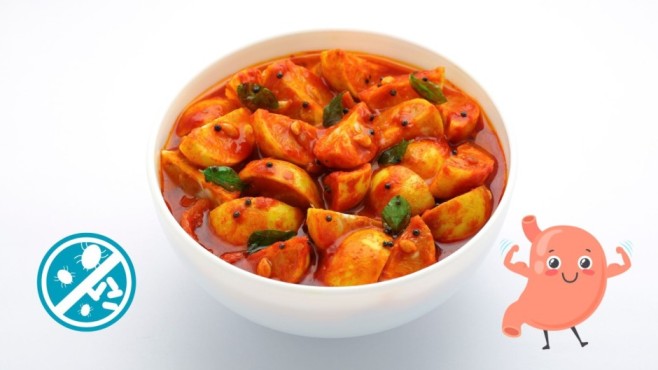
Kimchi’s vibrant and tangy flavor makes it a versatile addition to any meal. Traditionally, chefs serve kimchi as a side dish, complementing Korean staples like rice, noodles, or barbecue. Beyond its classic uses, kimchi shines as a star ingredient in dishes like kimchi fried rice or kimchi stew (kimchi jjigae), offering bold flavors that warm the palate.
Its versatility shines in modern fusion cuisines, elevating recipes like kimchi quesadillas, tacos, or pizza toppings.
It blends global tastes with Korean flair. Kimchi flavor pairs especially well with ramen, enhancing the experience.
Adding texture and a spicy tang, kimchi makes the popular noodle dish even more flavorful.
For those searching for “authentic Korean restaurants near me,” a serving of freshly made kimchi is a must-try.
It offers a glimpse into Korea’s rich culinary heritage, bringing the authentic taste to your table.
Indian Pickle Pairings
Indian pickles, with their complex and bold flavors, are indispensable at any Indian dining table. They pair seamlessly with comfort meals like dal and rice, adding a burst of flavor to the simplicity of lentils and steamed grains. A dollop of pickle with stuffed parathas or puri transforms these traditional breads into a flavorful treat.
Beyond Indian cuisine, pickles bring a unique twist to global dishes. A tangy lemon pickle can enliven a sandwich, while a spicy mango pickle adds zest to salads or grilled meats. Whether in humble kitchens or gourmet eateries, Indian pickles remain a delightful, flavor-packed companion.
Can Korean Food and Indian Spices Make the Perfect Match? Click Here to Know More.
Where to Experience These Delicacies
For those eager to explore the tangy, spicy world of kimchi flavor or savor authentic Korean cuisine, India offers many options.
Cities like Delhi and Gurugram are home to specialty Korean cafes and restaurants where kimchi takes center stage.
Kimchi is often paired with dishes like bibimbap, bulgogi, and ramen, offering a complete Korean dining experience. Many of these establishments also embrace the cultural essence of Korea, with K-pop music and themed interiors enhancing the experience. For the best options, look for “Korean food near me,” and you’ll likely discover hidden gems serving authentic kimchi and more.
Indian pickles deeply ingrained in daily meals, and markets, grocery stores, or regional artisans readily offer them. Some eateries and upscale Indian restaurants feature house-made pickles, crafted with traditional recipes that highlight their region’s unique flavors. If you wish to dive deeper into these culinary staples, visiting food festivals or local bazaars is a fantastic way to savor the authenticity and diversity of Indian pickles.
Want to know the best Korean cafe in India? Click Here to Know More.
Conclusion: A Harmonious Blend of Tradition and Flavor
The journey through the Kimchi Flavor and Indian pickles reveals more than just culinary delights.
It unveils stories of heritage, community, and innovation. These iconic foods stand as ambassadors of their cultures.
They showcase how flavors can transcend borders while staying true to their roots, embracing cultural connections.
Kimchi, with its tangy zest and probiotic richness, has become a global phenomenon, representing the dynamic evolution of South Korean cuisine. Indian pickles, steeped in spices and tradition, carry the legacy of family recipes passed down through generations. Both are testaments to the power of food in connecting people to their cultural identity.
Whether you’re savoring kimchi paired with ramen or enhancing a meal with a dollop of Indian mango pickle.
Each bite offers a taste of history and innovation, blending tradition with modern culinary artistry.
These culinary treasures invite food lovers to embrace their bold, distinct flavors, offering a diverse dining experience.
They celebrate the diversity they bring to the global table, uniting cultures through the love of food.


